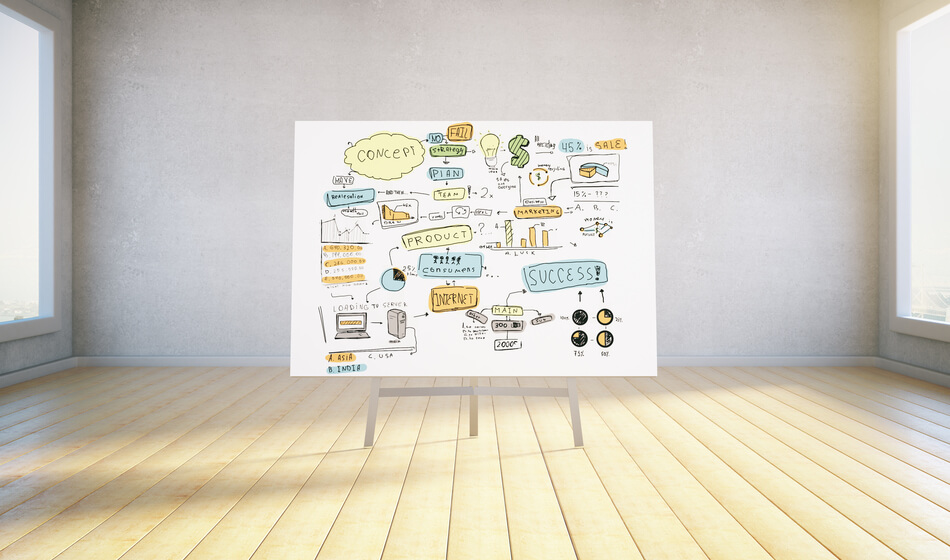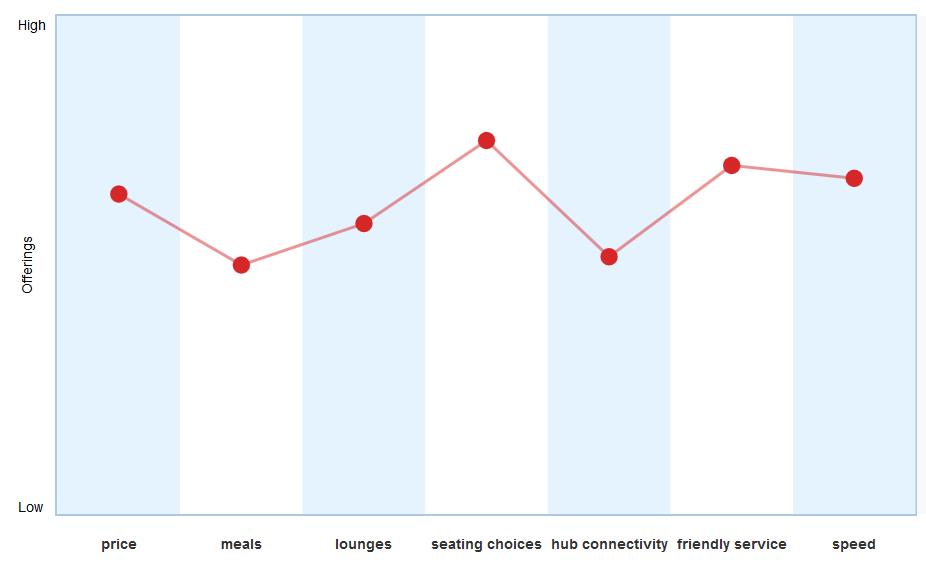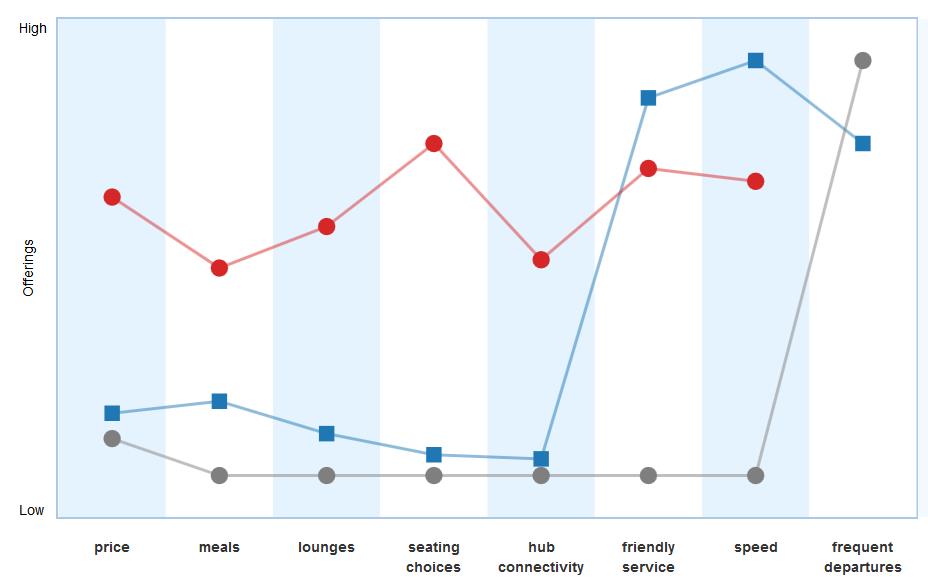In 2005 W. Chan Kim and Renée Mauborgne published the Blue Ocean Strategy which with over one million copies sold has become a ‘must-read’ book for anyone involved in creating strategies for business. Its basic tenant is that lasting success comes not from competing in a crowded marketplace but from creating your own uncontested market space. The book is based on a study of 150 strategic moves that span more than 100 years and 30 industries.
One of the techniques used in the book is the strategy canvas. It is a simple but very powerful visualisation methodology. Although in itself, it cannot identify new market spaces, it does provide a visualisation that might give a ‘eureka’ moment when used as part of a strategic process.
A Strategy Canvas can be built into Spider Impact our Balanced Scorecard Software tool.
A strategy canvas is basically a line graph that plots functions/factors against importance for a company or an organisation and then overlays competitors or industry benchmarks. In this way, information can be built to help formulate a competitive strategy.
In the example below, we can see a strategy canvas for the Airline industry; along the bottom are the factors being considered plotted against their relative importance:
Under normal circumstances, we might consider plotting our own airline against this benchmark to see where our deficiencies were and then attempt to ‘raise the bar’ to ensure we were at least the same as the benchmark or preferably better. This type of thinking has been described as the “granddaddy of all mistakes” the flawed logic behind the statement is that everyone will go down the same path and everyone will achieve better results. Clearly, this will not happen.
The strategy canvas can allow us to communicate a wholly differentiated strategy. For example, if we overlay Southwest airlines on the graph above, it would look something like this:
The blue line is Southwest airlines. We can see here immediately that Southwest airlines has created a differentiated strategy where they have cut out major items that have been benchmarked as important in the airline industry in general. This has allowed them to vastly reduce the cost of the service and therefore the price to a customer. Provided that the service offered is described correctly, and their customers know exactly what they will receive, this is a good differentiated strategy.
Returning to ideas for a Blue Ocean strategy, if we now overlay a different but related industry, for example, travel by car (the grey line), we can see a potential opportunity to capitalise on. Frequent departure is an area that has not been contemplated by the air industry in general. However, by restricting hub-connectivity, Southwest airlines has been able to provide frequent departures for the limited routes they supply. Thus they have created a Blue Ocean strategy.
In the example above we can see that Southwest Airlines has used ‘car travel’ thinking to create an area of differentiation to their strategy
Author note: Many thanks to strategycanvas.org who provided the strategy canvas tool used to create the strategy canvases above. The tool is browser-based and very simple to use.





